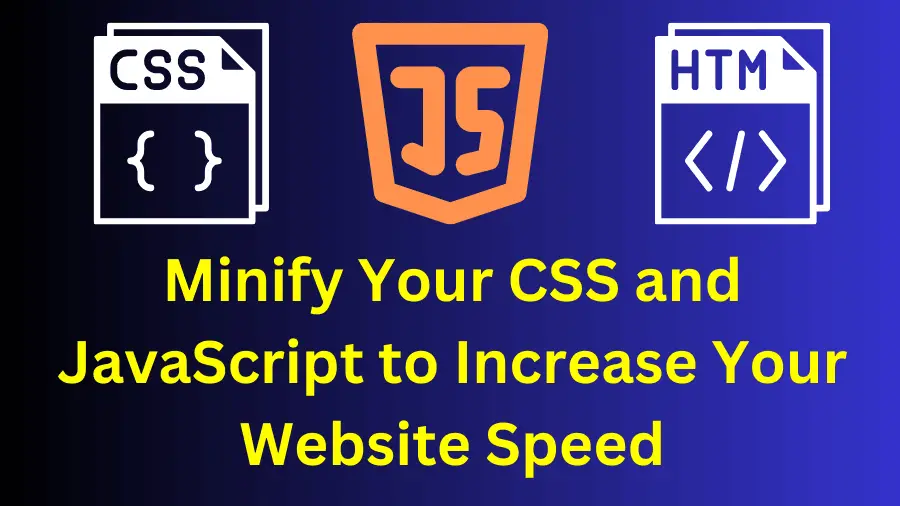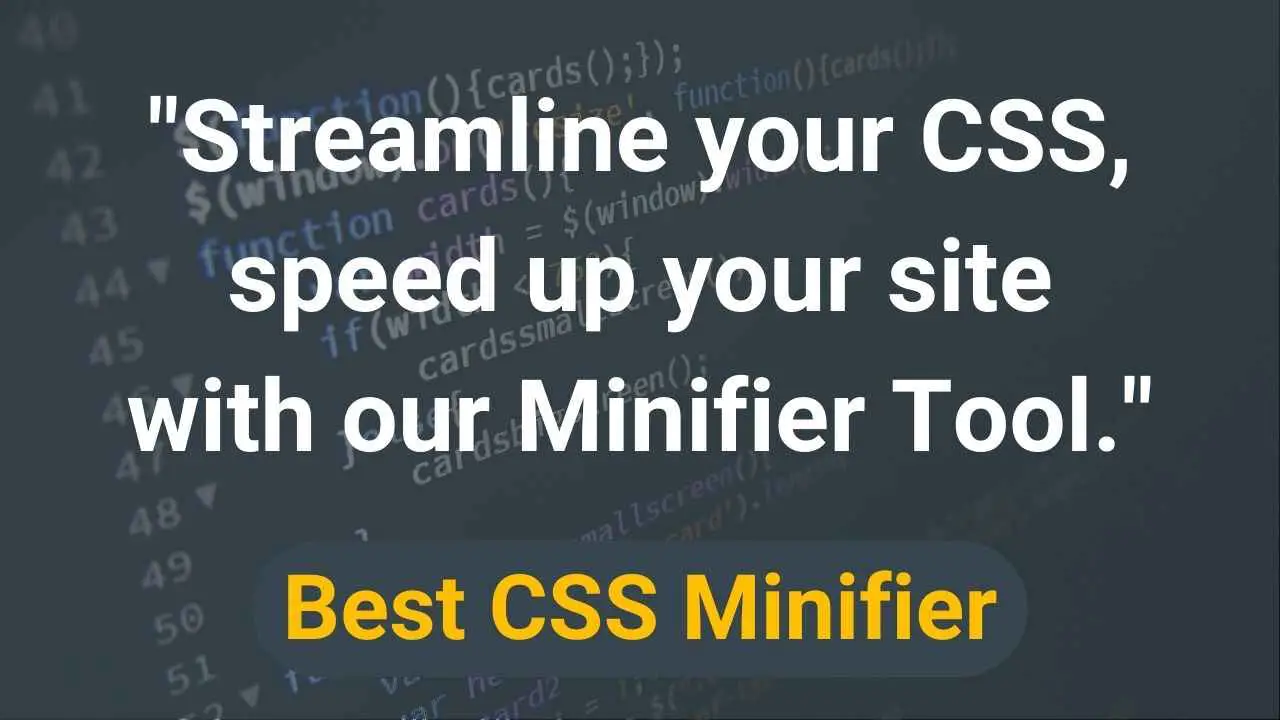CSS Minify | CSS Compressor Online | Minify CSS Online | Minify CSS and JS
Use this CSS minify online tool to optimize and compress CSS code, JS CSS Minifier helps to improve website loading speed by using minify script

Are you searching on the internet for CSS Minify, Best CSS Minifier, CSS in JS, Minify Code, Minify CSS and JS, Minify CSS File, Minify JS Code, CSS to Minify, or Javascript Minifier then you are on the right website.
What is Minify CSS?
CSS Minify, also known as CSS Minifier, is a process of removing unnecessary characters such as white spaces, comments, and line breaks from the CSS code to make it smaller in size without affecting its functionality. This helps in reducing the loading time of web pages, which in turn improves the overall performance of the website. Similarly, Minify Code and Minify JS Code refer to the process of removing unnecessary characters from the JavaScript code. With the growing popularity of CSS in JS, there is also a need to Minify CSS and JS in these frameworks. This is our CSS minifier online tool that can help in Minify CSS File or CSS to Minify, as well as JavaScript Minifier for Minify JS Code. CSS Minify and Javascript Minifier are crucial techniques for improving the website's performance by reducing the size of the code.
How to minify CSS code?
Here are the steps to minify CSS code. These steps will help you to compress your CSS code.
1. Copy the code from your Code Editor and Paste it in the above text area.
2. Select the type as CSS.
3. Click on the Minify Button.
4. Now copy the code by clicking on the Copy to Clipboard button.
5. Paste your code in your editor where you want to use it.
Before Minifying the CSS Code
*{
padding: 0;
margin: 0;
text-decoration: none;
list-style: none;
box-sizing: border-box;
}
body{
font-family: 'Open Sans', sans-serif;
font-weight: 400;
background-color: #28282B;
}
h1{
font-size: 18px;
line-height: 2rem;
}
After Minifying the CSS Code
*{padding:0;margin:0;text-decoration:none;list-style:none;box-sizing:border-box;}body{font-family:'Open Sans',sans-serif;font-weight:400;background-color:#28282B;}h1{font-size:18px;line-height:2rem;}

Is minifying CSS worth it?
Minifying CSS means making CSS files smaller by removing extra spaces, comments, and breaks. This is done to make websites load faster and work better. When a webpage loads, it saves all the CSS files associated with it. If these files are big, it takes longer to load the page. Minifying CSS makes these files smaller so they load faster. This also saves space on the website and makes it work better. By Minifying CSS, website owners can make their sites faster and easier to use for visitors.
Does minified CSS run faster?
Yes, Minified CSS files can load faster than non-minified ones. When CSS files are minified, unnecessary characters like spaces, comments, and line breaks are removed from the code, reducing the file size. This makes the CSS file faster to save and read by the browser.
Is CSS compressor and minifier are same?
Yes, CSS compressor and CSS minifier are the same things. They both refer to tools that compress and optimize CSS code by removing unnecessary characters, white spaces, and comments. The process of compressing and minifying CSS code reduces the file size, which results in faster load times and improved website performance. Although the terms "compressor" and "minifier" are used interchangeably, they both refer to the same tool and perform the same function. The choice of which term to use is a matter of personal preference or industry jargon.
Which CSS method is most efficient?
CSS (Cascading Style Sheets) is used to style and layout web pages. There are several methods to apply CSS styles, and each method has its advantages and disadvantages in terms of efficiency. The choice of the most efficient CSS method depends on various factors such as website complexity, project requirements, and development goals.
The four commonly used CSS methods are External CSS, Embedded CSS, Inline CSS, and CSS in JS. External CSS involves linking an external CSS file to the HTML document, which is efficient for larger websites. Embedded CSS adds CSS code within the HTML document and is useful for small projects. Inline CSS adds CSS code directly to the HTML elements using the "style" attribute, which is useful for applying CSS styles to individual elements. CSS in JS uses JavaScript to write CSS code, which is efficient for dynamic CSS styling.
External CSS is considered the most efficient method for larger websites with multiple pages, while Embedded or Inline CSS can be more efficient for smaller projects. It's important to keep in mind the potential impact on page load times when choosing the CSS method. Ultimately, the choice of the most efficient CSS method depends on the specific requirements and goals of the website.
Which is the fastest CSS library?
There isn't one CSS library that is the fastest because speed can be affected by many factors. However, some CSS libraries are designed to be faster by using only the necessary CSS styles and avoiding unnecessary code. Examples of these libraries are Pure CSS, Milligram, and Tachyons. Choosing a CSS library depends on the specific project needs, personal preference, and familiarity with the library.
Check our other tools